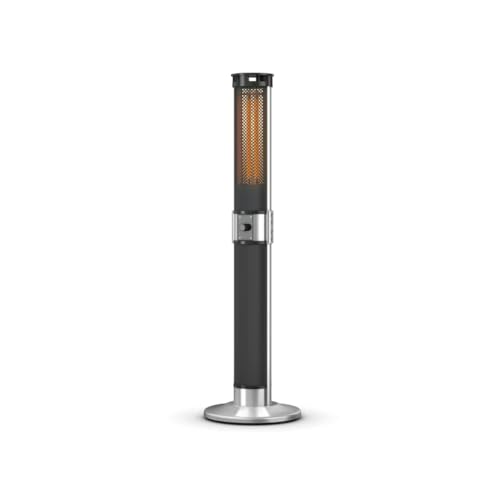An Patio Heat Lamp Electric Success Story You'll Never Remember

How to Choose a Patio Heat Lamp Electric
You have many options when it comes to heating your patio. Unlike propane models that require refills, electric heaters can deliver instant heat by flicking a switch or pressing the button.
They also don't emit gasses that could be harmful to health. Some offer adjustable heat settings for varying distances.
Type of Heater
You can relax in your outdoor living space throughout the day and throughout the seasons with the proper patio heater. Patio heaters come in many varieties that include freestanding propane or natural gas models as well as wall- or ceiling mounted electric radiant heaters. outdoor heater for patio electric will be based on the size of your space, the power sources and personal preference.
Most patio heaters are powered by electricity or natural or liquid gas and produce heat through a combination of convection and radiant heating. The heat output of patio heaters is measured in watts which can be converted into British thermal units (BTUs) to give a comparative. Some also have adjustable heat settings to allow for greater flexibility.

Patio heat lamps incorporate a burner mounted on a pole with an aperforated screen that reflects the flames and radiates heat downwards to warm objects, people and furniture. Some patio heat lamps come with reflective reflectors that sit over the burner that can be silvered to reduce the amount that heat is lost upwards.
The most common type of patio heater that is a gas patio heater, is often seen in outdoor areas of bars and restaurants because they generate a lot of heat quickly and distribute it evenly in all directions -- great to heat tables. They are portable and run on a propane tank, or they can be connected to your natural gas line. The latter is more convenient and has lower upfront costs, but requires fuel.
A growing number of homes are outfitted with natural gas lines, making these the ideal solution for those who prefer a gas patio heater. They are easy to set up, however they require a specialized and functioning gas line in order to function safely. Portable natural gas heaters are available with extension hoses that can help overcome this issue, however they can pose a tripping danger and could create an additional fire hazard when not being used.
Safety
Electric patio heaters can be used in enclosed areas, since they permit heat to radiate upwards and not outward. They are not intended to be used under a non-protected roof. The heater must be located at least 6" away from the ceiling or 18" away from the wall adjacent to avoid fire hazards.
Patio heaters made of propane and gas are typically safe to be installed in enclosed areas that have the proper cover made for outdoor use. The covers are typically made of fire-resistant fabric and come with an open roof that can be closed. These kinds of patio heaters are prone to security concerns due to the fumes and flames they create. They should be kept away from flammable objects, such as chairs and curtains.
When installing a patio heat lamp electric or any kind of patio heater, be sure to follow the manufacturer's instructions and safety precautions carefully. Select a heater that has UL and CSA safety certifications and be sure to read the user's manual thoroughly. Make sure the heater is out of the reach of pets and children. Some patio heaters that are freestanding, such as EUROM, have a built-in tipping safeguard that automatically shuts off the device if it falls over.
If your patio heater is connected to a natural gas line, you should check its condition periodically and have it tested by a qualified professional for leaks. If the line needs to be replaced, be certain to get a licensed plumber. A professional will be able to determine whether the line is properly routed or if it should be run through an underground pipe. A professional can also ensure that the heater in the patio is connected to an outlet that is GFCI-rated (ground fault circuit interruptioner) to guard against electric fires and shocks.
Installation
The the height at which a patio heater is mounted affects the amount of heat it can radiate into the area. It is important that the heater be mounted at an appropriate distance from any surfaces such as plastic, which can deform as well as wood, which may get too hot. You can mount the heater on a structure, wall or any other surface with standard mounting brackets. Some models feature a soft starter that reduces the current at the highest level to protect your circuits.
